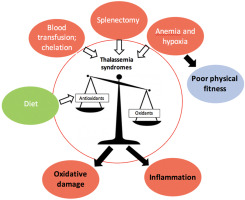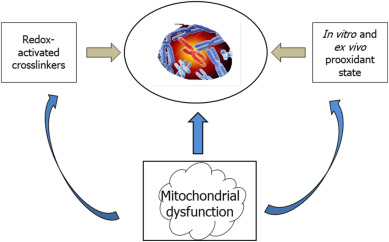Elsevier,
Free Radical Biology and Medicine, Volume 166, April 2021
In the β-thalassemias, oxidative stress, resulting from chronic hemolysis, globin chain imbalance, iron overload and depleted antioxidant defences, likely contributes to cell death, organ damage, anemia, hypoxia and inflammation. We assessed variations in these parameters in β-thalassemia syndromes in Sri Lanka.
Elsevier,
Redox Biology, Volume 40, April 2021
Fanconi anemia (FA) has been investigated since early studies based on two definitions, namely defective DNA repair and proinflammatory condition. The former definition has built up the grounds for FA diagnosis as excess sensitivity of patients’ cells to xenobiotics as diepoxybutane and mitomycin C, resulting in typical chromosomal abnormalities. Another line of studies has related FA phenotype to a prooxidant state, as detected by both in vitro and ex vivo studies. The discovery that the FA group G (FANCG) protein is found in mitochondria (Mukhopadhyay et al., 2006) has been followed by an extensive line of studies providing evidence for multiple links between other FA gene products and mitochondrial dysfunction. The fact that FA proteins are encoded by nuclear, not mitochondrial DNA does not prevent these proteins to hamper mitochondrial function, as it is recognized that most mitochondrial proteins are of nuclear origin. This body of evidence supporting a central role of mitochondrial dysfunction, along with redox imbalance in FA, should lead to the re-definition of FA as a mitochondrial disease.
Elsevier,
Pedosphere, Volume 31, April 2021
Implementation of the effective mitigation scenarios discussed in the article might help China, as a signatory to the 2015 United Nations Framework Convention on Climate Change (Paris Agreement), to achieve a 30% reduction in crop yield-scaled N2O emissions by 2030.
Samuel Lunardi, William Fernando de Borba, Jean Favaretto, Marcelle Martins, Henrique Baldi Faccenda
This paper discusses the groundwater contamination and its susceptibility in Serra Geral Aquifer, in Brazil.
Elsevier,
30th March 2021
Open Access (OA) and the advent of access programs such as Research4Life have rapidly transformed the publishing landscape. In some ways, they have made strides in bridging the knowledge gap between high- and low-income countries. In other ways, they may present obstacles, so it’s important to ensure that a move towards open access doesn’t disadvantage low-income countries.This article contributes to SDGs 10 and 17.
Elsevier, Case Studies on Transport Policy, Volume 9, March 2021
We study how two mobility social movements with online leverage (namely AltMobility PH and Friends of Pearl Drive) attempt to reorient the trajectory of transport development in favor of commuters and pedestrians by activating State apparatus through politics. Both organizations tried to engage politicians and influence agenda-setting by the State.


